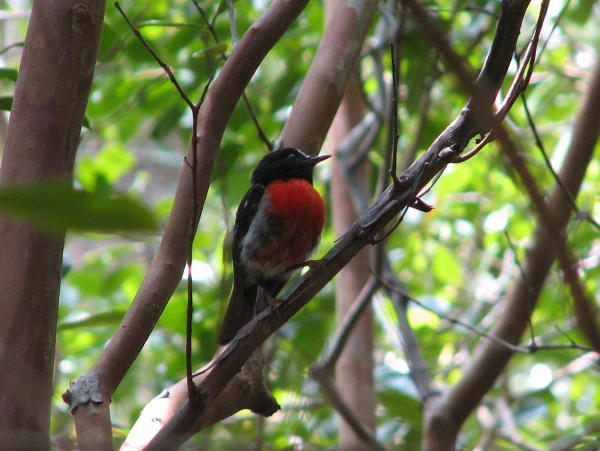Facts About Norfolk robin
The Norfolk robin, also known as the Norfolk Island scarlet robin or Norfolk Island robin, is a charming avian species belonging to the Australasian robin family, Petroicidae. This bird is endemic to Norfolk Island, an Australian territory in the Tasman Sea. Initially presumed to be the same species as Australia’s scarlet robin, it was officially recognized as distinct in 2015.
The adult male Norfolk robin is particularly striking, with black upperparts, a white forehead spot, white wing bars, and a vibrant red breast that contrasts with its white lower belly. In contrast, the females appear more subdued, featuring brown plumage and a pinkish breast.
These birds are predominantly found in the Mt Pitt area of the Norfolk Island National Park and in adjacent forest patches. They favor native subtropical rainforests, particularly areas rich in undergrowth and with a moist ground layer conducive to foraging. The population of the Norfolk robin experienced a decline until the 1980s but has since stabilized, with 1988 estimates suggesting there are approximately 400-500 pairs.
Despite this stabilization, the Norfolk robin faces several threats, including habitat degradation and predation by black rats and feral cats. Because of its small population and restricted range, the Norfolk robin is classified as Endangered on the IUCN Red List.
Conservation efforts are underway to safeguard this exquisite bird. These initiatives include managing threats by controlling rat and feral cat populations to reduce predation and addressing invasive weed species to prevent habitat degradation. Additionally, there are plans to reintroduce the Norfolk robin to nearby Phillip Island once the habitat there is suitable to support them.
